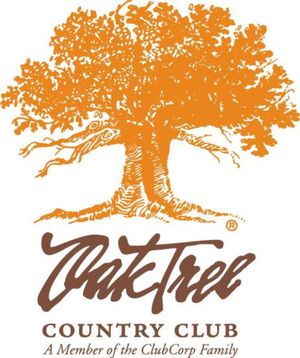 Golf Course Review by: Billy Satterfield
Golf Course Review by: Billy Satterfield
Rankings:
The Takeaway: While across the street neighbor Oak Tree National garners most of the attention around Oklahoma City, Oak Tree Country Club’s East course is a worthy silver medal winner. While the course is solid for the first 12 holes, it is the final six that sets the East course apart from the competition. Pete Dye fans won’t be disappointed here. Grade B+
Quick Facts
Designer: Pete Dye in 1982
Cost: Private
Phone Number: (405) 340-1010
Course Website: Official Website - Visit Oak Tree Country Club (East)'s official website by clicking on the link provided.
Directions: Get here! - 700 West Country Club, Edmond, Oklahoma 73025 – UNITED STATES
Photos: See additional photos of Oak Tree Country Club (East)
What to Expect: Located across Kelly Road a wedge shot east of Oak Tree National, Oak Tree Country Club is a 36 hole facility that gave Pete Dye a virtual monopoly on golf course design north of Oklahoma City is the affluent city of Edmond. After Dye completed his work at Oak Tree National in 1976, he crossed the street to work on Oak Tree Country Club with the West course opening in 1978 and the East in 1982. Both the West and East courses are routed through neighborhoods but is done in a way that doesn't feel too distracting to the golf. The East is the longer and better course of the two which is why it is no surprise that it is the annual host site of the Oklahoma Open. In similar fashion to Dye's famous Harbour Town design in Hilton Head, SC, the East course is solid for the first 12 holes but then really ramps it up for the final six holes which stand as some of the best holes at the complex. The West course is no slouch with a handful of memorable holes but the course plays two strokes softer than the East for sure. Both courses feature plenty of bunkers to contend with as well as some water hazards to avoid. The courses are very conducive to walking with mostly subtle terrain paired with a couple of drastic elevation changes that add character to the layout that is otherwise achieved through the artificial mounding Dye is famous for. In the summer you'll see plenty of players utilizing carts during their round and stocking up on the complimentary water in the coolers found on the course.
By the Numbers
| Tees | Par | Yardage | Rating | Slope |
|---|---|---|---|---|
| Gold | 70 | 7126 | 76.3 | 137 |
| Gold/Blue | 70 | 6787 | 74.7 | 134 |
| Blue | 70 | 6455 | 72.2 | 131 |
| Blue/White | 70 | 6036 | 72.0 | 131 |
| White | 70 | 5608 | 68.7 | 127 |
| White/Red (Women) | 71 | 5245 | 71.6 | 122 |
| Red (Women) | 71 | 4937 | 69.0 | 118 |
Individual Hole Analysis
Signature Hole: 17th Hole – 207 Yard Par 3 – Equal parts beauty and treachery, the 17th at Oak Tree Country Club’s East course proves that Pete Dye loves to test your merit to the bitter end. This fairly lengthy one-shotter features a deep faced bunker on the right and water up the entire left. Very little is offered from a bail out perspective so you need to be committed throughout your swing to avoid tragedy. The rock wall that creates the boundary between land and water is a nice change of pace to Pete’s traditional railroad tie look.
Best Par 3: 14th Hole – 236 Yards – Well, here is a test! A long par three that is fronted by water the entire pathway to the green greets players on the 14th and begs them to go long rather than short. There is a bailout area left of the green with some reprieve on that line if you come up short. The wide putting surface with its slopes will test your short game so just finding the green in regulation is no guarantee of a par.
Best Par 4: 13th Hole – 398 Yards – I don’t know how many railroad ties were sacrificed in making this hole but it was a lot; and they look great. In signature Pete Dye style, railroad ties act as a wall separating the fairway from the water on the right side of the hole while additional ties create a retaining wall for the bunkering left of the green. Visually the hole is impressive but it doesn’t stop there as the 13th features perhaps the most creative green on the course with undulations that can stump that finest of putters. When the green speeds are fast, players need to be leery of attacking a far right pin as the slope in the putting surface can send a ball tumbling to a watery grave.
Best Par 5: 4th Hole – 560 Yards – The first par five on the East course is a strategic offering that asks players when they want to cross the creek that angles from left to right across the fairway. On the tee shot the clear decision is to stay right of the creek, but from there you can cross the water to the left fairway where the green opens up, or you can continue plotting up the right side and take a more challenging approach shot over the water and bunkers with an inferior angle. The biggest question is how confident are you in your long iron or fairway wood game versus your wedge game.
Birdie Time: 10th Hole – 374 Yard Par 4 – The front nine at Oak Tree Country Club’s East course is solid, but the back nine is fantastic. While not visually engaging, the 10th is your opportunity to pick up an insurance birdie before tackling the rest of the inward nine where you’ll need all the help you can get. Little trickery is found here and with the hole playing a couple of clubs short of 400 yards, players need to take the club they feel best about off the tee to find the fairway so that they can attack the flag with their approach shot.
Bogey Beware: 16th Hole – 455 Yard Par 4 – The most dramatic tee shot of the tee is found on the impressive 16th hole. A hazard creeps in from the left side and finishes at a point where a small patch of trees is planted and must be carried or steered left of in order to find the best position. If you go too far left the water hazard comes back into play and can quickly snatch away your dreams of carding a par. Once safely off the tee, the approach shot plays downhill to a peninsula green that may look pretty but awaits the opportunity to lure you into complacency as players often pull their shot from the sloping fairway right into the water. Playing it safe to the right side is no gimmie as a small bunker with a steep brow can quickly turn a routine up and down to a testy sand shot to a green with nothing but water behind it. It is a fantastic hole that can get away from you quick if you don’t respect it.

/large/Oak Tree CC (East) 17th.jpg)
/large/Oak Tree CC (East) 14th.jpg)
/large/Oak Tree CC (East) 13th.jpg)
/large/Oak Tree CC (East) 13th water.jpg)
/large/Oak Tree CC (East) 13th approach.jpg)
/large/Oak Tree CC (East) 4th.jpg)
/large/Oak Tree CC (East) 4th fairway.jpg)
/large/Oak Tree CC (East) 10th.jpg)
/large/Oak Tree CC (East) 16th.jpg)
/large/Oak Tree CC (East) 16th approach.jpg)
